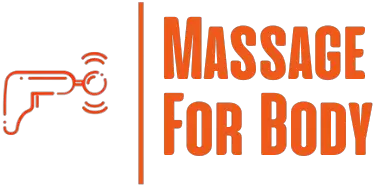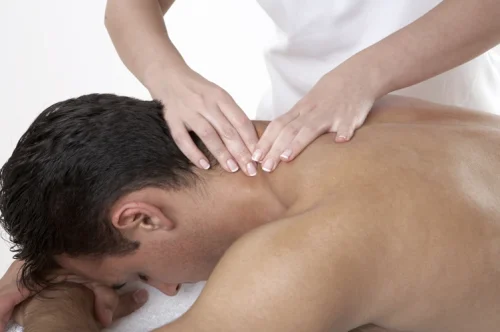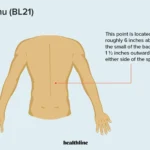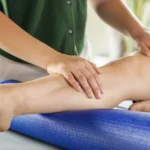Inflammation is your body’s built-in defense system — the alarm that tells immune cells to rush to a problem area. But when that alarm never turns off, it can lead to persistent pain, stiffness, and fatigue. That’s where massage therapy can make a powerful difference.
Research shows that massage helps reduce inflammation by lowering pro-inflammatory cytokines, improving circulation, increasing lymphatic drainage, reducing cortisol, and even influencing cellular repair pathways. In this guide, we explore the science behind how massage reduces inflammation, the techniques that work best, and how to safely build massage into a long-term recovery routine.
Table of Contents
🩸 What Is Inflammation?
Inflammation is part of your immune system’s defense and repair process.
There are two main types:
- Acute inflammation: A short-term response that helps heal an injury or fight infection.
- Chronic inflammation: A prolonged, low-grade response that can damage tissues and contribute to conditions like arthritis, heart disease, and autoimmune disorders.
While acute inflammation is protective, chronic inflammation drains energy and keeps the body in a constant stress state. Massage helps regulate this response by calming the nervous system and improving tissue recovery.
Learn more about why you might feel sore after a massage and how it relates to inflammation and healing.
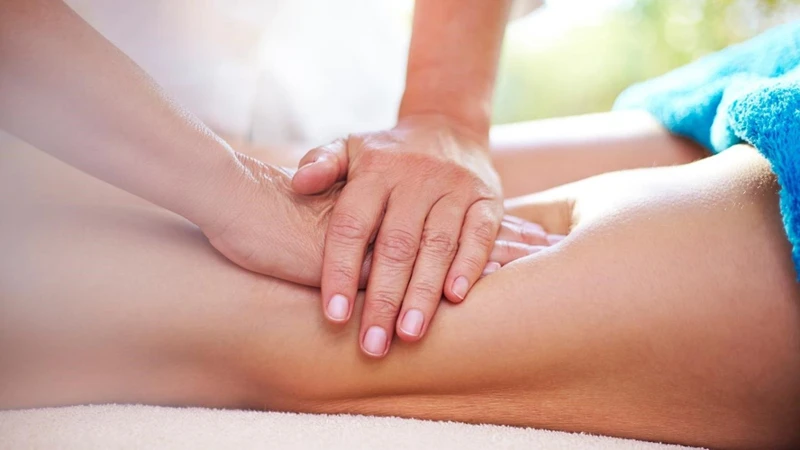
💆♀️ How Massage Reduces Inflammation
Massage therapy targets inflammation through mechanical, hormonal, and neurological pathways.
Boosts Circulation and Lymph Flow
Massage increases blood flow and stimulates lymphatic drainage, helping remove excess fluid, inflammatory waste products, and cellular debris.
- Cleveland Clinic notes that massage improves circulation and helps the lymphatic system move fluid more efficiently.
Lowers Cortisol and Stress Hormones
High cortisol amplifies chronic inflammation.
Massage significantly lowers cortisol levels (by up to 31% in clinical reviews) and increases serotonin and dopamine — shifting the body toward parasympathetic “rest-and-heal” mode.
Reduces Pro-Inflammatory Cytokines
Cytokines like IL-6 and TNF-α fuel inflammation.
A 2012 study published in Science Translational Medicine (Crane et al.) found that a 10-minute post-exercise massage reduced IL-6 production and decreased NF-κB activity, a major inflammatory signaling pathway.
Eases Muscular Tension
Tight muscles compress blood vessels and nerves.
Massage releases these restrictions, improving nutrient delivery and reducing irritation that contributes to inflammation.
🧬 The Science of Anti-Inflammatory Massage
Massage is not just a relaxation tool — it produces measurable biological changes.
Harvard Wyss Institute Mechanotherapy Study
Harvard researchers created a robotic “mechanotherapy” device to replicate massage. Their findings showed that mechanical pressure:
- reduced neutrophil infiltration (immune cells that trigger inflammation),
- improved mitochondrial repair,
- accelerated muscle regeneration.
NIH & Exercise-Induced Inflammation Study
NIH-supported research showed that massage downregulated inflammatory gene expression while boosting mitochondrial biogenesis — helping tissues repair more quickly.
Mayo Clinic & Immune Function
Mayo Clinic reports that regular massage improves lymph flow, decreases inflammation, and supports immune system regulation.
When these effects combine, the body switches from an overactive inflammatory state to a calm, regulated healing mode.
- The Cleveland Clinic reports that massage therapy can improve pain perception, sleep quality, and overall immune regulation (Cleveland Clinic – Massage Therapy: What It Is, Benefits & Types).
- In Harvard Health, researchers note that massage can reduce stress, improve circulation, and help manage pain linked to chronic inflammation (Harvard Health – Massage: Get in Touch With Its Many Benefits).

🔄 Acute vs Chronic Inflammation: When Massage Helps Most
Acute Inflammation
(e.g., sprain, infection, post-surgery swelling)
- Body is in active healing mode
- Avoid deep pressure
- Use gentle strokes, lymphatic drainage, and light compression
Chronic Inflammation
(e.g., arthritis, autoimmune conditions, repetitive strain)
- Massage helps regulate immune signals
- Swedish, myofascial release, and trigger-point therapy can reduce long-term pain
- Consistency is key
Matching the massage style to the type of inflammation ensures the safest results.
🌸 Best Types of Massage for Inflammation Relief
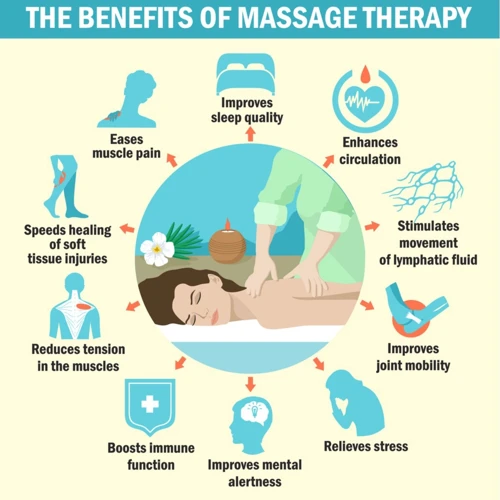
1. Swedish Massage – Gentle and Circulatory
Promotes relaxation, reduces cortisol, and enhances blood flow.
✅ Best for: stress-related inflammation, fatigue, mild arthritis.
2. Lymphatic Drainage Massage – Detox and Fluid Balance
Stimulates lymph flow, reduces swelling, and clears waste.
👉 Read next: Lymphatic Drainage Massage: Benefits and How It Works
3. Deep Tissue Massage – For Chronic Muscular Inflammation
Breaks up adhesions and long-term muscle tension.
⚠️ Caution: Avoid deep pressure during acute flare-ups or fresh injuries.
👉 Explore: Deep Tissue Massage Benefits
4. Myofascial Release & Trigger Point Therapy
Releases fascial restrictions, reduces nerve irritation, improves mobility.
🔬 The Biology of Inflammation and Massage
Inflammation involves oxidative stress, immune signaling molecules (cytokines), prostaglandins, and histamines.
When these remain elevated, tissues become hypersensitive and heal slowly.
Massage influences these pathways by:
Increasing Nitric Oxide (NO)
NO widens blood vessels, improving oxygen delivery.
Reducing NF-κB Activation
NF-κB is a major inflammatory signaling molecule.
Multiple studies show massage reduces its activity, lowering inflammatory gene expression.
Enhancing Parasympathetic Activity
Massage activates mechanoreceptors that signal the brain to release calming neuropeptides, which reduce inflammation systemically.
In simple terms: massage tells your body it’s safe, and when the nervous system relaxes, inflammation naturally decreases.
| Massage Type | Pressure Level | Primary Benefits | Best For | Avoid If |
|---|---|---|---|---|
| Swedish Massage | Light to Medium | Improves blood flow, lowers stress hormones, enhances relaxation | General inflammation, muscle tension, stress-related inflammation | You need deep muscle release or have very dense tissue |
| Lymphatic Drainage Massage | Very Light | Stimulates lymph flow, reduces swelling, removes waste fluids | Post-surgery recovery, chronic swelling, fluid retention, autoimmune inflammation | You have active infection, fever, or blood clots |
| Deep Tissue Massage | Firm to Deep | Breaks up adhesions, improves mobility, relieves chronic muscle inflammation | Long-term muscle stiffness, repetitive strain, deep tension | During acute flare-ups or when swelling is visible |
| Myofascial Release | Gentle, sustained pressure | Relieves fascial restrictions, improves range of motion, reduces nerve irritation | Fibromyalgia, chronic pain syndromes, stiffness from poor posture | You have skin inflammation, infection, or extreme tenderness |
| Trigger Point Therapy | Targeted firm pressure | Releases local muscle knots that maintain chronic inflammation | Chronic pain areas, tension headaches, back or shoulder inflammation | If pressure increases sharp or radiating pain |
🌿 Massage for Autoimmune and Chronic Pain Conditions
Autoimmune disorders like RA, lupus, and fibromyalgia often involve chronic inflammation.
Massage can help — with care.
- Use Swedish or lymphatic drainage during remission
- Avoid deep pressure during flare-ups
- Communicate openly with your therapist
A randomized trial published in Pain Medicine (Field et al., 2017) involving 48 adults with RA found that weekly Swedish massage for 8 weeks significantly reduced joint swelling and improved mobility (Pain Medicine Journal – Massage Therapy for Rheumatoid Arthritis).

🧘♀️ Massage for Inflammation and Mental Health
Inflammation doesn’t just affect the body — it can also influence mood, sleep, and energy. Chronic inflammation increases stress hormones and can contribute to anxiety, fatigue, and brain fog. Massage therapy counteracts this cycle by calming the nervous system and lowering cortisol, which indirectly helps reduce inflammatory signaling.
In fact, a 2020 review in Frontiers in Psychology found that regular massage sessions significantly improved mood and perceived energy while reducing inflammatory markers in people with high-stress lifestyles. When your nervous system is balanced, the body stops producing excessive cytokines and inflammatory proteins.
This mind-body connection is one reason massage therapists often see improvements in both mental clarity and physical recovery after just a few sessions. Massage teaches your body how to shift from “fight or flight” into “rest and repair” — the state where true healing happens.
👉 Related: Why Do You Feel High After a Massage? 7 Powerful Reasons Explained
⏳ How Often Should You Get a Massage for Inflammation?
The right frequency depends on whether you’re managing acute or chronic inflammation.
- For general wellness: A massage every 2–4 weeks helps maintain circulation, reduce stress hormones, and prevent low-level inflammation from returning.
- For chronic inflammation or autoimmune pain: Weekly or biweekly sessions are ideal at first. Once symptoms improve, you can transition to maintenance sessions every 3–4 weeks.
- After injury or surgery: Always follow your healthcare provider’s guidance. Gentle techniques like lymphatic drainage or Swedish massage can often resume after the acute phase, once swelling decreases.
Most people notice improvements within 3–5 sessions, including less stiffness, better range of motion, and deeper sleep. However, consistency is the key — the benefits build over time, much like exercise or meditation.
🌼 Long-Term Benefits: Restoring Balance Naturally
The true power of massage for inflammation lies in its cumulative effect. With regular sessions, your body gradually shifts into a more balanced, low-inflammatory state.
Long-term massage benefits include:
- Reduced systemic inflammation: Regular massage can lower chronic C-reactive protein (CRP) levels, a key inflammation marker in the blood.
- Improved joint and muscle function: Less stiffness and better tissue hydration mean easier movement and fewer flare-ups.
- Enhanced nervous system regulation: By training your body to enter the parasympathetic “rest-and-heal” mode more easily, massage helps buffer future stress responses.
- Better mood and mental clarity: Chronic inflammation is linked to fatigue and brain fog — consistent massage helps restore mental focus and calm.
- Long-term pain reduction: With decreased inflammatory load, pain signals calm, leading to improved quality of life.
Pairing massage with anti-inflammatory nutrition, hydration, and gentle activity creates a self-reinforcing cycle of healing — a foundation for resilience that lasts years, not days.
💬 Frequently Asked Questions About Massage for Inflammation
Does massage really reduce inflammation?
Yes. Studies show massage reduces IL-6, TNF-α, CRP, and inflammatory gene expression.
Can massage make inflammation worse?
Only if pressure is too deep during acute swelling. Use gentle techniques until the tissue calms.
What’s the best massage for inflammation?
Swedish and lymphatic drainage. Deep tissue works for chronic tightness — but avoid during flare-ups.
How long does it take to see results?
2–3 sessions for mild inflammation. For chronic conditions, weekly sessions give the best long-term benefits.
Can I do self-massage at home?
Yes — light pressure and slow movements help maintain circulation.
📚 References
- Cleveland Clinic – Massage Therapy: What It Is, Benefits & Types
- NIH – Massage Therapy Reduces Inflammation After Exercise
- Harvard Health – Massage: Get in Touch With Its Many Benefits
- Pain Medicine Journal – Massage Therapy for Rheumatoid Arthritis
- Zheng, S., Guo, Y., & Li, Y. (2018). Effects of Massage Therapy on Pain and Inflammation: A Systematic Review and Meta-Analysis.
⚠️ Disclaimer:
This article is for educational and informational purposes only and is not a substitute for professional medical advice, diagnosis, or treatment. Massage therapy affects the body differently based on individual health conditions, medications, and the type or stage of inflammation. Do not use massage as a replacement for medical care. Always consult your doctor, physiotherapist, or a licensed healthcare professional before starting any new treatment — especially if you have chronic inflammation, autoimmune disorders, cardiovascular conditions, recent injuries, infections, or post-surgery concerns.
Reviewed November 2025 by April Merrick — Wellness Editor, MassageForBody.com
